The Special Anti-Terrorist Unit (SAJ) is a highly elite police unit under the Republic of Serbia’s Ministry of Internal Affairs jurisdiction. Its primary mission is to execute sophisticated and challenging land, water, and air operations, as directed by the police director and approved by the Minister of Internal Affairs.
Introduction
The unit embodies the spirit of Duke Zivojin Misic’s famous quote: “Who dares, can, who knows no fear, goes forward.” With decades of experience and a training regimen modeled after leading anti-terrorist units globally, the SAJ boasts a highly trained and well-equipped team capable of effectively carrying out complex police tasks to secure the safety and property of the citizens of the Republic of Serbia.
History
In the 1980s, a new type of security threat emerged, which criminologists define as organized criminal activity characterized by extreme violence and other dangerous acts aimed at intimidating the population and government to achieve extremist goals, mainly political and religious. The constant evolution and global nature of terrorism only served to amplify the danger it posed. In response, national security systems worldwide began reorganizing their security structures, with several regularities observable.
Internally, this process began with establishing special purpose units, which typically consisted of professionally trained and equipped operational personnel. Externally, cooperation between national security systems at the regional and international levels intensified to prevent terrorist threats.

In the former Socialist Federal Republic of Yugoslavia, the military-police operation on Mount Raduša in 1972 led to the destruction of the sabotage-terrorist “Bugojanska Group,” catalyzed the formation of special purpose units. In response, the federation established a Battalion for special operations within the Federal Secretariat for Internal Affairs to combat terrorism at the tactical level. The socialist republics of the former SFRY soon followed suit, establishing similar units at the republic level.
On December 18, 1978, the Socialist Republic of Serbia organized the Special Operations Militia Unit (JMSD) within the Republican Secretariat for Internal Affairs. The JMSD was classified as an independent unit trained to handle kidnappings, resolve hostage situations, locate and destroy subversive-terrorist groups, perform high-risk arrests, and resolve rebellions in republican institutions. From 1983 to 1990, the JMSD was part of the Militia Detachment for Security and Special Operations of the Secretariat of Internal Affairs. It was solely responsible to the Secretary of Internal Affairs (or his deputy), who also decided on its deployment.
In the 1990s, with the break-up of the former state, the Special Tasks Militia Unit was reorganized and renamed the Special Unit of the Ministry of Internal Affairs of the Republic of Serbia. In June 1992, the formation of Special Units was decided by the Ministry of Internal Affairs of the Republic of Serbia, and the newly formed units were tasked with maintaining public order and peace. These units were later renamed Special Anti-Terrorist Units (SAJ) in 1994. In 2003, the Ministry of Internal Affairs underwent a reform, and four teams (A, B, C, and D) were formed instead of the previous three. The Novi Sad SAJ was disbanded, and the Pristina and Belgrade SAJs were merged into a single unit. In 2012, SAJ underwent further changes with the formation of new organizational elements and increased operational staff. In 2016, the Anti-Terrorist Unit (PTJ) and SAJ merged, and the best members were selected to form the reorganized SAJ.
The Special Anti-Terrorist Unit (SAJ) is a highly professional and independent organizational unit within the Police Directorate of the Ministry of Internal Affairs in Serbia. It is recognized as a special unit by the current Law on Police and is specially equipped and trained to carry out the most complex police tasks and operations in the fight against terrorism. These tasks include resolving hostage situations, making high-risk arrests, providing expert assistance in the fight against organized crime, providing immediate physical protection of important individuals and objects, and engaging in rescue operations during natural disasters.
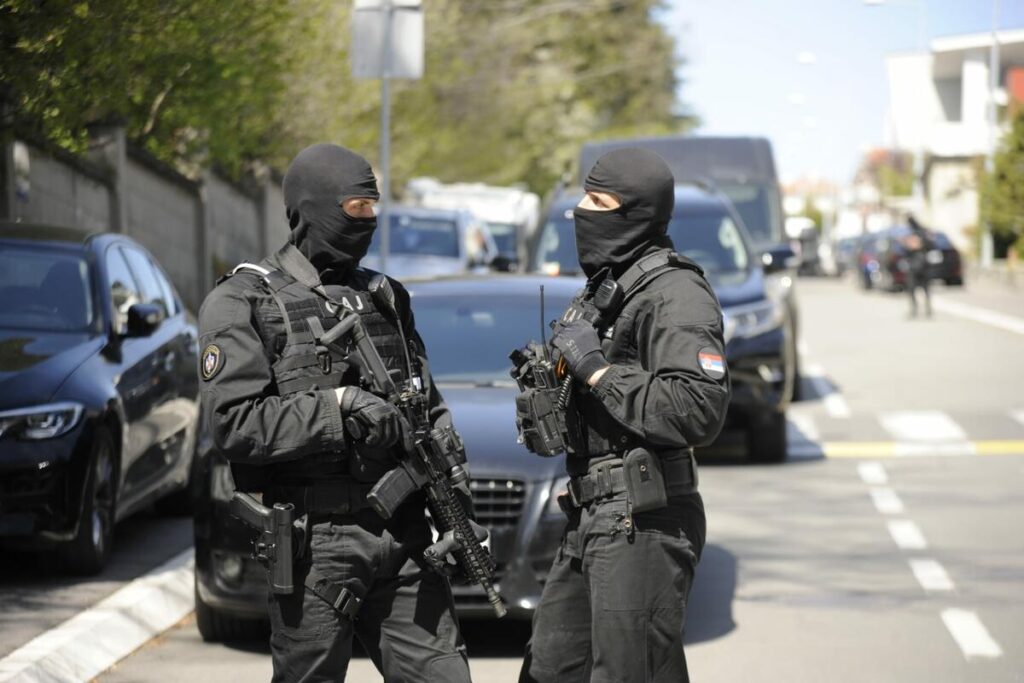
The engagement of the SAJ is carried out according to a “double key” mechanism, which requires the approval of both the police director and the minister of the interior. The unit is responsible for its operational work directly to these state officials. The memory of SAJ members who have lost their lives while performing their duties is honored with a monument at the unit’s base, and their names and deeds are an important part of the unit’s tradition. The SAJ has received numerous awards from high-ranking state officials, including the Gold Medal for Merit by the President of the Republic of Serbia in February 2015.
Organization
The Special Anti-Terrorist Unit (SAJ) was established with a structure inspired by leading anti-terrorist units across the globe after careful analysis of the country’s national security needs. It comprises a Command, an Operations and Technique Group responsible for communication, control, and command functions and is staffed with specialists in communication systems, information technology, and special techniques. In 2012, the organization underwent changes that resulted in forming of a Negotiating Group.
In 2012, the Instructor Team was also created, consisting of the most seasoned members of the SAJ. The Instructor Team Leader coordinates the instructors responsible for tactics in special operations, firearms handling, marksmanship, combat, special physical training, alpinism, diving, parachuting, and explosive ordnance. He is involved in decision-making regarding the admission of candidates to the unit and provides expert opinions and recommendations on equipment and weapons procurement. In addition, the Instructor Team conducts candidate selection and training in collaboration with operational team leaders.
Since 1999, the SAJ has had a specialized Medical Support Group, which was expanded in 2005. Today, it operates as a team of doctors and medical technicians responsible for providing medical support during training and interventions and educating unit members.
The Group for Weapon and Ammunition Development and Improvement was established within the SAJ in 2006, focusing on testing, maintenance, and enhancement of the unit’s weapons and equipment. The Group’s experts keep abreast of the latest technological advancements in specialist weapons and equipment and provide training in ballistics and optoelectronic shooting devices. Today, this Group operates within the Instructor Team.
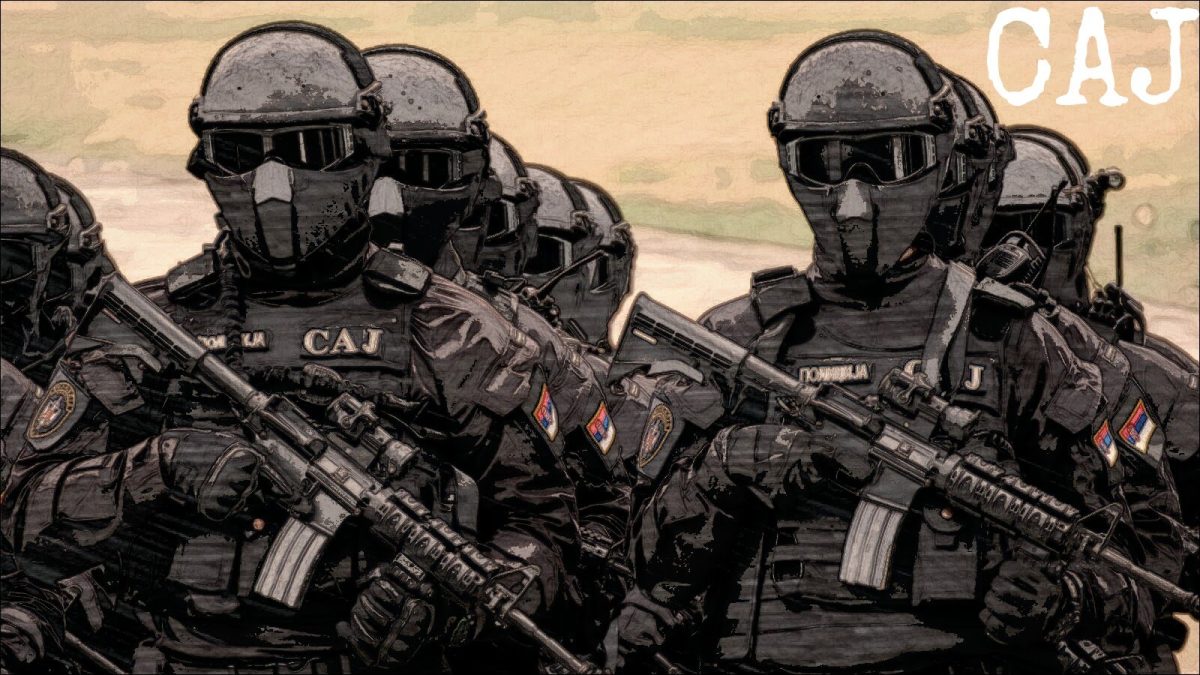
The Logistics and Technical Support Team ensures the unit’s logistical needs are met. The Special Anti-Terrorist Unit’s operational staff is divided into three teams, designated as Teams A, B, and C.
Team A comprises the unit’s most seasoned members, who are organized into specialized groups. These teams are responsible for executing complex operations such as resolving hostage situations, apprehending dangerous individuals, and disrupting criminal organizations. Established in 2003, the team consists of specialist groups, including snipers, divers, service dog guides, and experts in handling mine-explosive devices and anti-sabotage protection. Membership in the Specialist Team is based on a combination of factors, including the individual’s interest and professional growth within a specialist training, as well as a favorable assessment from their instructor, who is also the leader of the specialist group they are applying to join.
The support team is tasked with providing direct physical protection to individuals, securing facilities of crucial importance, and supporting other operational teams during interventions.
Tradition
The emblem of the Special Anti-Terrorist Unit features a white double-headed eagle on a red shield with four eyes and a cross. This emblem symbolizes Serbian statehood and tradition, with the double-headed eagle holding a snake, representing evil, in its claws and a sword that symbolizes justice and law piercing the snake’s head.
Adhering to Serbian Orthodox tradition, the unit members observe the baptismal feast of Arandjelovdan on November 21. Archangel Michael is revered as a commander and protector of warriors and the guardian of the Orthodox faith. The celebration is held in the presence of unit members, state leaders, church officials, and friends and associates of the unit. It occurs at the St. Stefan Dečanski Church in Batajnica and within SAJ’s “May 13th” headquarters.
Selection and training
The Special Anti-Terrorist Unit (SAJ) implements a comprehensive training system to ensure the readiness and proficiency of its personnel. SAJ recognizes the importance of having a well-trained and highly-skilled workforce and thus puts great emphasis on the selection process of potential candidates. The unit’s needs determine the selection criteria. They may include a minimum of two years of experience with the Serbian Ministry of Internal Affairs, a minimum education level of 4th degree, and a clear criminal record.
Potential candidates can apply through the duty service of SAJ, where their basic information is recorded for later review. Before undergoing selective training, applicants’ papers and identities are thoroughly checked. The next stage involves psychophysical tests, which assess the candidates’ physical strength, endurance, and cognitive and emotional capacities, among other things. The tests include classic strength and endurance exercises, running, rope climbing, swimming, and a martial arts evaluation.
Candidates must meet the standards set by SAJ’s selective training, and proficiency in boxing, judo, karate or similar martial arts is mandatory. Each candidate’s character is also evaluated during sparring, giving insight into their temperament and demeanor. The SAJ Command carefully monitors the professional results of young police officers to ensure the unit attracts the best individuals from the Serbian police force.
The selection process for the Special Anti-Terrorist Unit is rigorous and extensive, with multiple stages to assess the candidates’ fitness, skills, and motivation. The process starts with an application and pre-selection stage, where candidates are evaluated based on their background and qualifications, including a minimum of two years of work experience within the Serbian MUP, a minimum 4th-degree education, and a clean criminal record. The next stage is the psychophysical tests, where the candidates undergo physical strength, endurance, and cognitive capacity assessments.
After the psychophysical tests, the best-performing candidates move on to the interview stage, where they are evaluated by the unit’s senior officers and undergo a medical examination. The results of all these assessments are used to create a unique ranking list of candidates, who are then invited to participate in the 90-day selective training program.
The selective training is divided into two phases, and candidates are eliminated at the end of each phase based on their performance on elimination exams. Throughout the training, candidates undergo intensive tactical training, working individually and as a team. Their reactions are closely monitored, and they are expected to show discipline, emotional control, and a strong will. The training program gradually intensifies, increasing the intensity and volume of physical and mental efforts while reducing rest periods.
A doctor is always present during the training to monitor the candidates’ health, and they can decide to remove a candidate if they judge their health to be in danger. The final stage of the process is the final elimination exam, and only those who pass this exam will be offered a position in the elite unit.
The final test for the candidates in the selective training of the Special Anti-Terrorism Unit (SAJ) is a comprehensive evaluation of the candidate’s knowledge and skills acquired during the training period. The test checks the extent to which the candidate has learned and mastered elements of the training, including physical training, machine training, weapons training, topography, and more. The instructor team analyzes the results of all remaining candidates and decides who to send to the final test before the SAJ commission. The test determines the candidate’s readiness to join the elite unit. Those who pass the final test receive a certificate of completion and a decision on employment in the SAJ of the Ministry of Internal Affairs of the Republic of Serbia.
In 2011, 135 police officers applied for a job vacancy in the Special Anti-Terrorism Unit (SAJ) of the Ministry of Internal Affairs of the Republic of Serbia. Out of these 135 applicants, 45 met the conditions outlined for the competition and were invited to the selective training. Of these 30 candidates, only 9 successfully completed all stages of the selective training. Out of these 9 successful candidates, 5 were accepted and assigned to the B team. These numbers demonstrate the high standards of the selective training process for SAJ.
New members of the Special Anti-Terrorism Unit (SAJ) of the Ministry of Internal Affairs of the Republic of Serbia are assigned to operational teams based on the unit’s needs and then undergo intensive training. This training includes basic and advanced anti-terrorist training, regular training, and professional courses. The mandatory courses include precision shooting, summer alpinism, survival, and using special vehicles. However, implementing certain courses depends on the members’ interests. The unit’s practice of not immediately engaging new members in interventions and instead having them observe and support experienced members has proven to be effective in allowing them to gain firsthand experience and understand that no intervention should be approached in a predetermined way.
Basic anti-terrorist training for new members typically lasts six months. It covers elements of police tactical training, familiarization with the unit’s equipment and weapons, tactics for arresting aggressive individuals and resolving hostage situations, and working in a team. Upon successful completion of basic training, members receive a certificate. Advanced anti-terrorist training begins after the successful completion of basic training and is tailored to each member’s strengths and interests. Members are referred to specialist courses, such as sniper, diving, summer alpinism, physical protection, and anti-sabotage protection courses. After completing each course, members receive a certificate, and after several anti-terrorist pieces of training, they receive a certificate of completed training. It takes at least two years of continuous training and improvement to create a quality member of the special unit.
The Special Anti-Terrorist Unit (SAJ) members undergo continuous and comprehensive training to maintain their readiness. This is achieved through a well-structured training plan and program, which includes both in-unit and cooperative training with similar units from both domestic and foreign forces.
The SAJ central base has state-of-the-art facilities, including a multi-story building with a rock climbing wall, a fully-equipped shooting range for precision shooting practice, infantry obstacle courses, a gym, and a swimming pool.
The unit also conducts basic, intermediate, advanced, and specialist parachute training, in partnership with the Serbian Air Force and the 63rd Parachute Brigade of the Serbian Army, at various locations such as the military airport in Niš, the sports airport “Ečka” near Zrenjanin, and the airport in Kikinda. In 2012, members of the SAJ made a total of 740 parachute jumps in cooperation with the Serbian Air Force.
Winter training for SAJ members includes skiing, winter survival skills, winter mountain climbing techniques, special operations techniques, and search and rescue training in winter conditions.
The SAJ collaborates with the Mountain Rescue Service of Serbia to provide quality alpinist training. This is demonstrated by the successful ascent of Gran Paradizo (4,061 meters) and Mont Blanc (4,810 meters) by SAJ alpinists in August 2013.
Equipment
The Special Anti-Terrorist Unit (SAJ) reflects its elite status in the specialized equipment and weapons it has at its disposal. The joint efforts of state managers and the command of SAJ have led to significant investments in modern and high-quality equipment and weapons. The procurement process involves regularly monitoring technological advancements in the field and thoroughly testing equipment and weapons before deciding. The Group for the Construction and Improvement of Weapons and Ammunition plays a crucial role in assessing potential areas of improvement and adapting the equipment to the unit’s needs. As a result, the SAJ is now one of the best-equipped units in the region and comparable to elite units in Europe and the world.
In the category of semi-automatic pistols, the SAJ uses the CZ 99 and a smaller number of CZ 999 models produced by the national manufacturer Zastava Arms from Kragujevac. The systems are chambered in 9×19 mm Parabellum and are mainly used for candidate selection and training. The primary models are the Austrian Glock 17 Gen 3 in 9×19 mm Parabellum, modified for shooters with front mechanical sights and “fiber” optical fibers.
A smaller contingent of fourth-generation Austrian pistols is also available. For intervention purposes, the Streamlight M6 Tactical Laser Illuminator device, which combines a tactical light and a laser target marker, can be mounted on the gun rails. The SAJ has also acquired a “Simunition” conversion, in the form of a blue cover with a special barrel and shutter, for firing FX Simunition 9 mm training ammunition. The training ammunition uses plastic-filled paint or light, short, non-ricocheting bullets.
The utilization of “FX Simunition 9 mm” training ammunition and its conversion is crucial as it provides a highly realistic simulation during training. This allows for mutual shooting exercises to take place without any significant risk of harm to participants.
The Special Anti-Terrorist Unit (SAJ) uses a variety of firearms to ensure its members can carry out their duties reliably and safely. The unit has a smaller number of Glock 21 Gen 3 in .45 ACP caliber and Glock 35 Gen 4 in .40 S&W caliber, as well as a smaller number of Czech CZ 75 SP-01 Shadow in 9mm Parabellum. They use cases from different and reliable manufacturers, the most common being BLACKHAWK SERPA Level 2 Auto Lock or SERPA Tactical Level 2. SAJ also has fewer revolvers for training purposes, including R-357 models from Zastava Arms and Ruger GP-100 in .357 Magnum caliber.
In the category of automatic weapons, SAJ has Zastava M92 models in 7.62×39mm, which are modified for the unit’s needs by the Group for the Construction and Improvement of Weapons and Ammunition. The unit uses the German HK MP5 in 9mm Parabellum caliber for more compact weapons. These models are widely accepted in similar units worldwide and can be adapted for CQB with the addition of an Aimpoint CompML3 red dot sight and Surefire tactical lamp. A laser target marker and blue extension for firing FX Simunition 9mm ammunition can also be mounted for training.
For automatic rifles, SAJ has Zastava M70 AB2 with a collapsible stock and Zastava M-70 AB1 with a fixed stock from the national manufacturer “Zastava Orje” in 7.62×39mm rifle caliber. Both models are based on the Kalashnikov principle and are used for candidate selection and training in rural conditions. The unit also has an East German AK-47 in 7.62×39mm with a good mass balance, and a 40mm under-barrel grenade launcher can be mounted if needed. The Vektor R4 automatic rifle in NATO 5.56×45mm caliber is also used by the unit and visually resembles the Zastava M21 rifle.
The Special Anti-Terrorist Unit (SAJ) is equipped with high-quality rifles from Western European manufacturers. One of the primary weapons used by the unit is the SIG SG 552 Commando rifle in 5.56x45mm NATO caliber. These rifles are compact, accurate, and reliable, making them suitable for close-quarters combat and underwater use. The rifles are fitted with red dot sights, tactical lights, and silencers from the Brugger & Thomet brand to enhance their performance. The SAJ also utilizes the American Colt M4 A4 Commando carbine, with standard and carbine-length barrels protected with ergonomic covers from the company UTG.
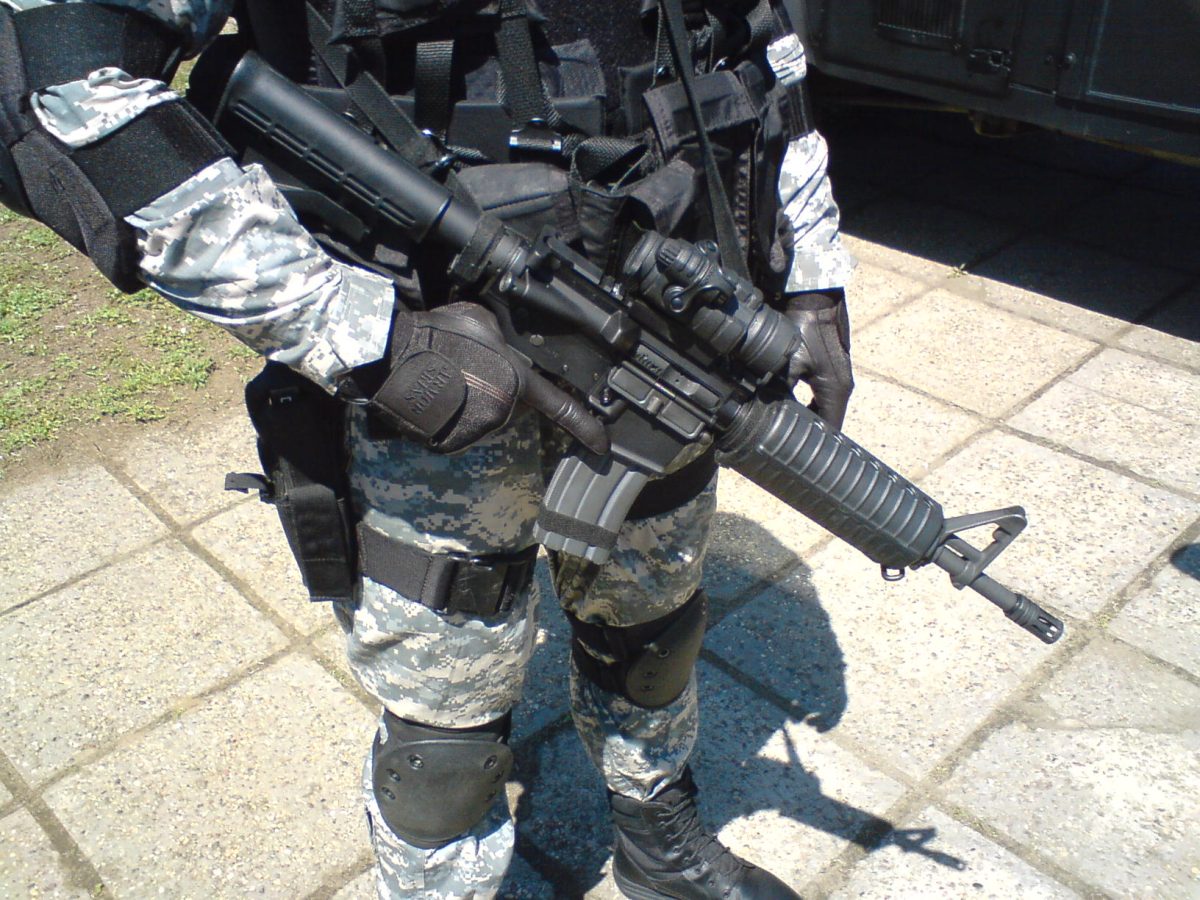
Recently, the SAJ has replaced the Colt M4 with the SIG 516 CQB rifles, configured with telescopic stocks and polymer frames from B5 Systems and Magpul PMAG. The unit also uses the Aimpoint PRO red dot sight with a rubber cover for these rifles. The FAB PLA-1 adapters and Steiner DBAL A3 devices, which feature laser markers and IR illuminators, are crucial for a close-quarters battle.
For building and premises clearance, the SAJ uses combat shotguns from the manufacturer Benelli, including the M4 Super 90, M3 Super 90, M4 A1, and Mossberg M-590, all in 12 gauge.
In terms of precision shooting, the unit has access to the Heckler & Koch G3 rifles in semi-automatic A4 and SG1 variants, the SIG 716 rifles in 7.62x51mm NATO, the Sako TRG 22 and TRG 42 rifles in .308 Winchester and .338 Lapua Magnum, respectively, the Tikka T3 Tactical rifles in .308 Winchester, and the Blaser R93 Tactical LRS-2 rifles in 5.56mm caliber. The rifles are fitted with high-quality scopes, light intensifiers, and rangefinders from brands such as Schmidt & Bender, Simrad, Leica, and Bushnell. For long-distance engagements and anti-material purposes, the SAJ uses the Zastava M93 Black Arrow rifles in 12.7x108mm caliber and the Barrett M82 A1 rifles in 12.7x99mm NATO (.50 BMG), both equipped with Israeli-made optoelectronic devices and ballistic computers.
The Serbian Special Anti-Terrorist Unit (SAJ) is equipped with a range of heavy weaponry, including the Browning machine gun in .50 BMG caliber, the HCB manufactured by Zastava Arms in 12.7×108 mm, and the Soviet KPVT in 14.5×114 mm. The unit also has 30 mm Zastava M93 automatic grenade launchers, which are locally produced.
For tactical operations, members of the SAJ wear black tactical overalls, GK Pro, specifically designed for urban environments. The unit also has black two-piece uniforms, including the 5.11 and HPFU models produced by BLACKHAWK. Additionally, the SAJ has two-piece uniforms in the American digital urban pattern, AT Digital, intended for use in urban conditions. For rural operations, members are provided with two-piece uniforms in the British rural camouflage pattern, DPM, manufactured by Arktis.
SAJ personnel are equipped with reliable tactical boots, including the Magnum, 5.11, ADIDAS GSG-9 and LOWA models, with most of the LOWA models being the Zephyr GTX MID Task Force in black.
To ensure maximum protection during operations, the unit is equipped with modern ballistic plate carriers, which come in black and shades of green. In 2016, the SAJ received 70 black plate carrier vests produced by Jugoimport SDPR, and the primary models in use today are the 5.11 TacTec in black and TAC FROM in shades of green. For head protection, the unit uses different helmet models, such as the ProTech Mod. 775 and Mile Dragic M97, both of which have a PASGT design and provide ballistic protection level IIIA. The unit also has many modern Ops-Core FAST High Cut helmets, which offer the same level of protection as the Sestan-Busch models. These helmets have rails on the left and right sides for mounting tactical equipment and front optics support for night devices.
The unit also has a contingent of Ulbrichts Witwe Zenturio 05 ballistic helmets made according to the Titanium Sphera concept. The unit has ballistic visors mounted on helmets and Ops-Core Face Protector ballistic face masks for additional head and face protection. Helmets from manufacturers such as JOBE and Protec provide fragmentation protection and protection from mechanical shocks and are frequently used during parachute, mountaineering, and diving training.
For dynamic building intrusions, the members’ protection is ensured with ballistic shields from manufacturers such as Protech in the Intruder series. These shields are equipped with ballistic visors and light lamps.
The specialist tactical equipment of the unit includes state-of-the-art communication devices such as the PELTOR ComTac XP sets, Motorola GP 380 UHF and Motorola GP 340 radios. For breaching purposes, the unit employs the LIBERVIT Door Raider hydraulic systems that help to overcome barriers at entry points efficiently and quietly. Additionally, Broco exothermic devices are also used for the same purpose. During low-light or night-time operations, the unit utilizes high-quality binoculars from ACTinBlack, known as DTNVG-14.
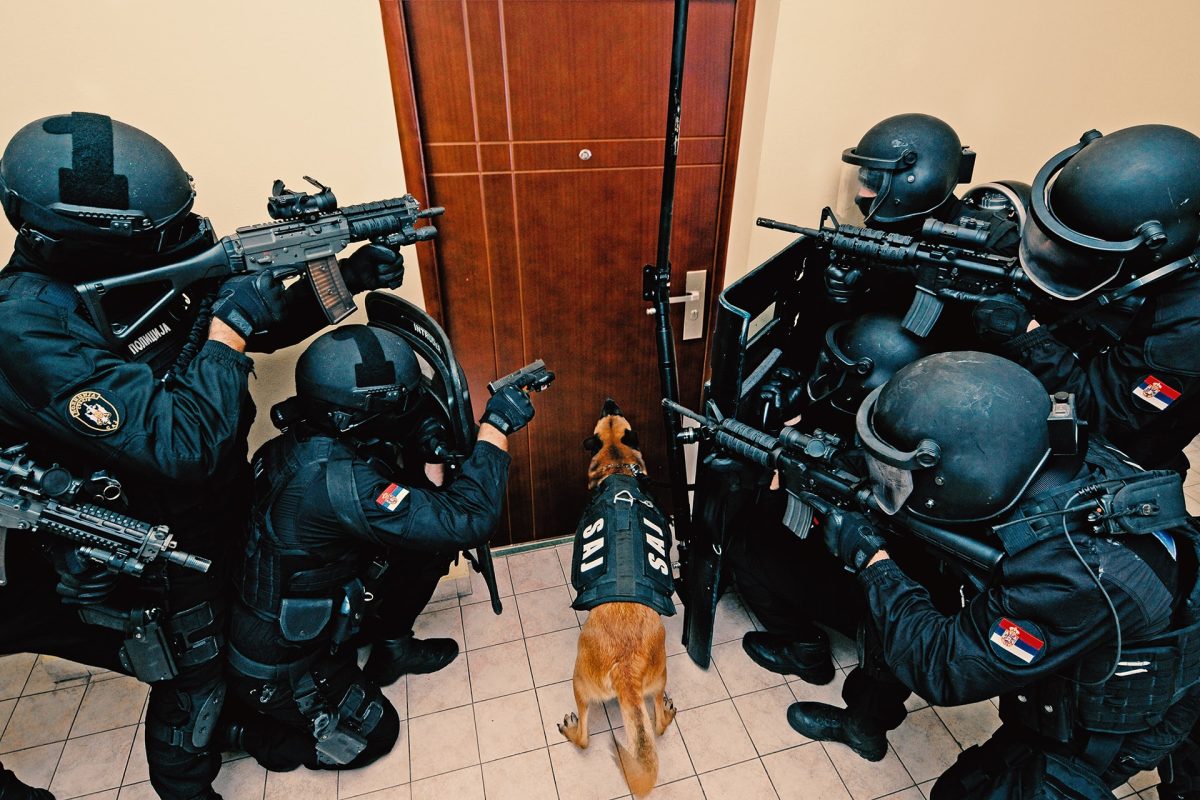
The unit’s mobility is sustained through a fleet of specialized vehicles for various purposes. It has access to Land Rover Defender armored vehicles, Mercedes G-300 jeeps, and Mitsubishi Pajero Sport GLS. The infantry fighting vehicles M80 or M15A 4×4 and the multi-purpose armored fighting vehicle 4×4 M16 Milos from Jugoimport SDPR are adapted to meet the unit’s needs. Aerial operations are carried out by helicopters that belong to the Helicopter Unit of the Ministry of Internal Affairs of the Republic of Serbia. For water operations, the unit employs fast landing boats, BWA or Zodiac, to transport personnel and equipment swiftly.
Cooperation
The establishment of professional cooperation is important for a variety of reasons. It allows the Special Anti-Terrorist Unit (SAJ) to share experiences and exchange knowledge with other elite units worldwide, which ultimately enhances the training, operations, and reputation of the unit and the Republic of Serbia. The SAJ has established relationships with several foreign elite units, including the Italian NOCS, Austrian EKO Cobra, French GIGN and RAID, American Navy SEALs and Green Berets, and more.
The SAJ also has strong relationships with regional elite units, including those in Montenegro, Bosnia and Herzegovina, Croatia, Slovenia, the Republic of Macedonia, Hungary, Romania, Greece, and Slovakia.
SAJ specialists have participated in UN international missions and training programs, including courses at the International Law Enforcement Academy. They have also regularly participated in joint training exercises with American elite units through the Joint Combined Exchange Training program and with the FBI HRT.
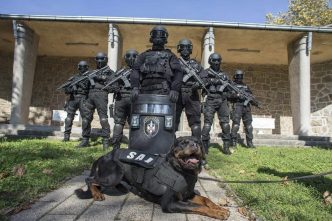
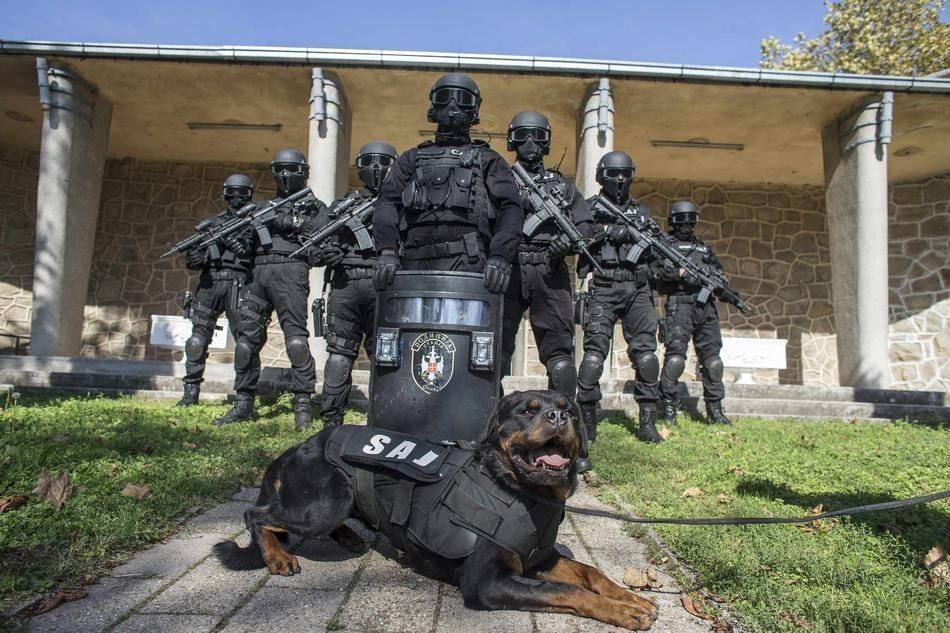
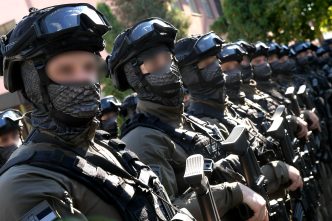
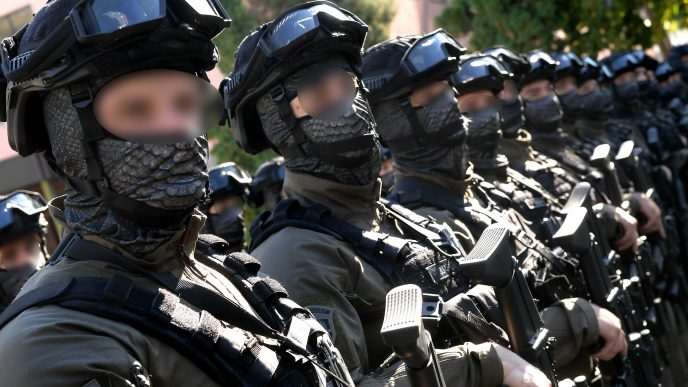
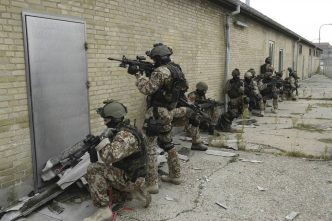
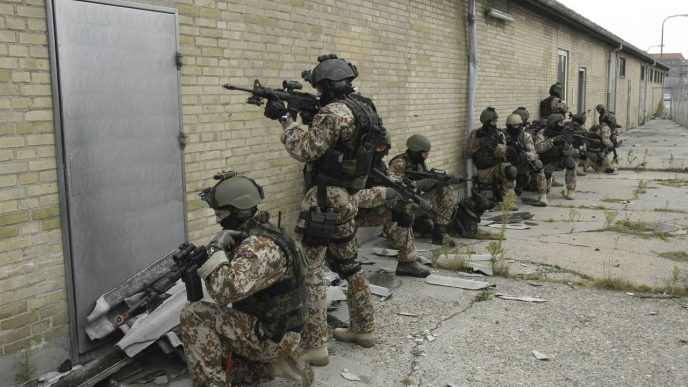
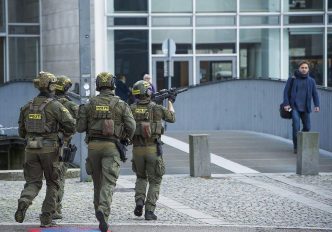
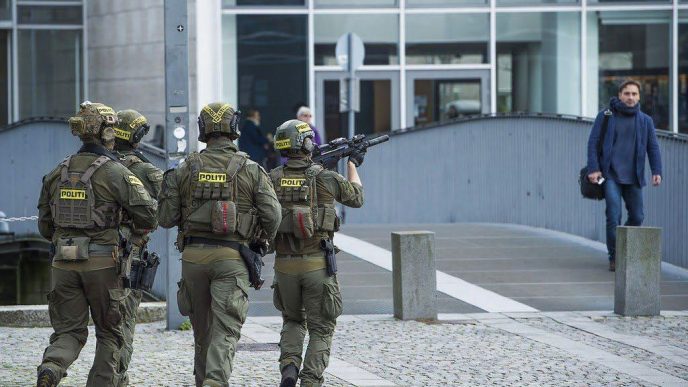
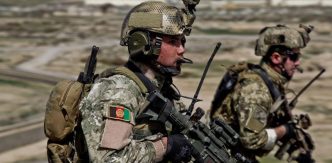
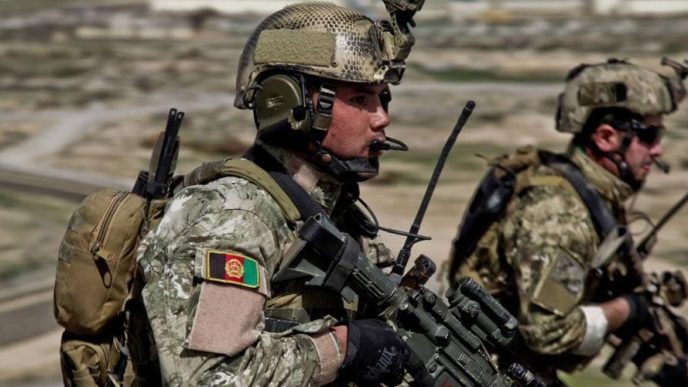
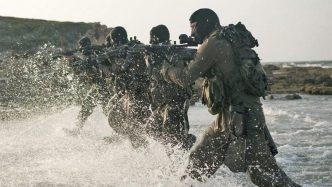
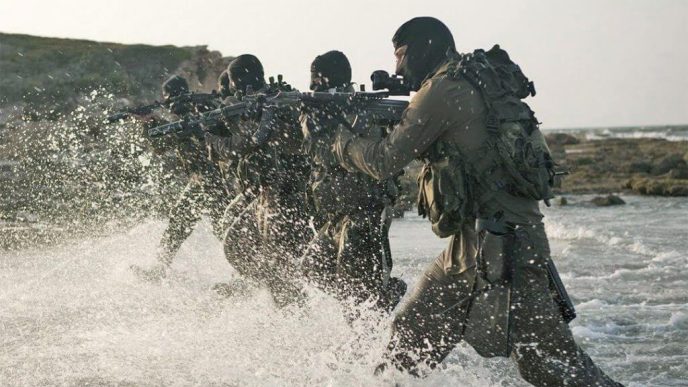
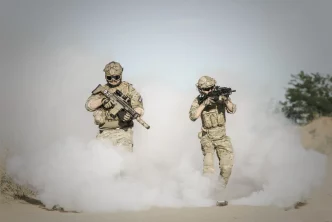
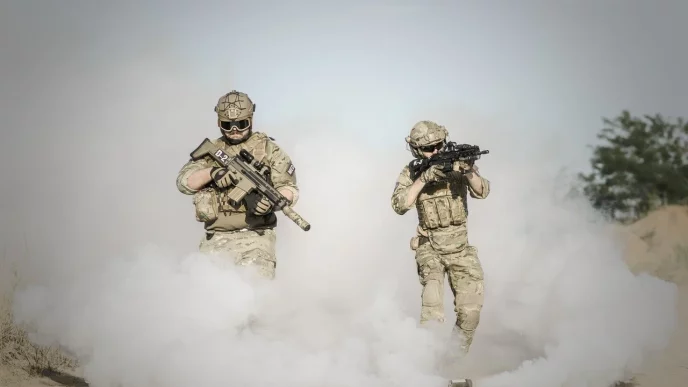
The stories I’ve heard about fmr SAJ and KOBRE dudes being in PMCs that are fully aligned against the U.S and the majority of our closest allies. We seem to forget the Serbs were trying to hunt and kill U.S personnel on numerous occasions. I’m glad that “we don’t have to worry about that anymore, Bosnia is over blah blah blah” but I don’t think lots of those vets forget how they shot down our F/A-117, they killed US SOF (allegedly) on occasion and since then, they have had Wagner associates literally targeting Westerners in Africa etc.
This was fully on display in Mali, and especially in Niger recently. But hey I guess cross cooperation trumps the past and we should “all be cool” apparently.